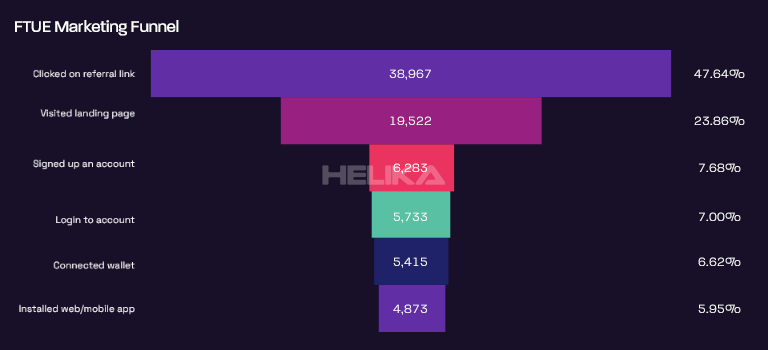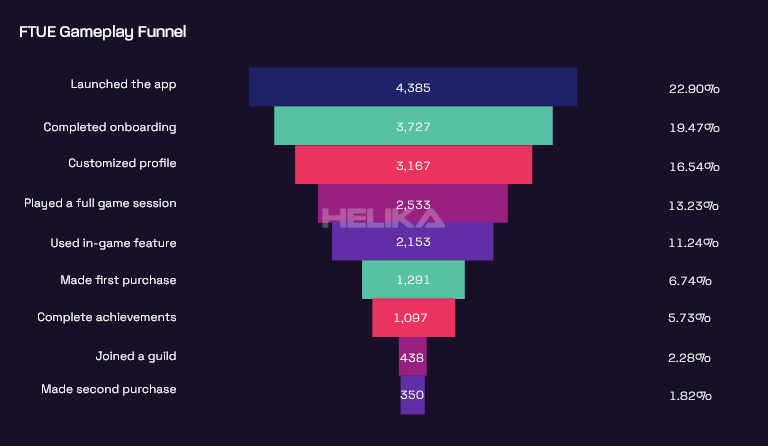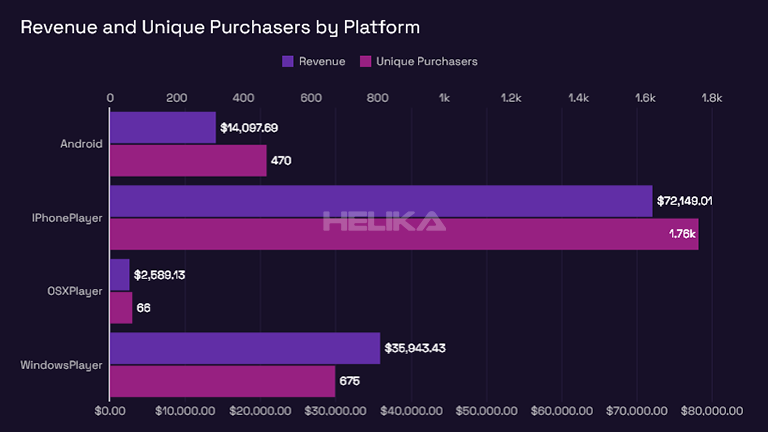Drop-off points throughout your funnel can cost your gaming company revenue, players and engagement. Determining what causes players to drop-off is essential in improving your gameplay funnel by providing game insights. Game Insights allow you to gain a better understanding of your gameplay mechanics, game design and player behaviors. By analyzing data, you can identify areas of improvement and make informed decisions on how to optimize your gameplay funnel.
In the world of Web3 gaming where blockchain technology is used to create decentralized and player-owned virtual worlds, the importance of game insights becomes even more crucial. With transactional data being recorded on the blockchain, game developers have access to a wealth of information that can provide valuable insights into player behavior and gameplay patterns.
However, knowing how to collect this data is just one part of the battle. The real challenge lies in interpreting and utilizing this data to make meaningful changes to your gameplay funnel. This is where the concept of a gameplay funnel analysis comes into play.
Marketing Funnel vs Gameplay Funnel
Before we continue with the remainder of this article, it’s important to distinguish the different between your top of the funnel market efforts and in-game activities. The marketing funnel is the process a potential player goes through before they even start playing your game. This includes things like advertisements, social media, and word of mouth. Various marketing channels is often used by game developers to funnel potential players into their game.

On the other hand, the gameplay funnel is focused on analyzing and optimizing the player’s experience within the game itself. This includes things like tutorial completion rate, level completion rate, and retention rate. By understanding how gameplay serves as a form of funnel itself through gamification, game developers can make data-driven decisions to improve the overall player experience.

This funnel is where players are engaged and will potentially purchase in-game assets as they are introduced and immersed in your gameplay. Failure to improve this funnel can leave players feeling frustrated and lead to a high churn rate, ultimately impacting your game’s success in the long run.
Defining Each Stage of The User Journey
The first step of optimizing your gameplay funnel would be to outline and clarify what each stage of the customer journey is. Different funnel stages within the game as mentioned earlier can be actions such as tutorial completion rate or level completion rate. However, there is an additional sales funnel within the overarching in-game funnel.
Funnel stages specific to sales can be a pop-up offer at the main menu of the game, an in-game store, or microtransactions within the game. It is important to identify and track each of these stages separately to get a better understanding of player behavior and make improvements accordingly. Sometimes improving user experience is all that it takes to dramatically increase conversion rates within a game’s sales funnel.
You don’t know who could become a potential customer if user behaviour isn’t tracked on this level. It can seem tedious to measure all these funnel steps but if done correctly, it serves as a powerful tool in the decision-making process for game developers.
Gameplay Funnel Analysis Tools By Helika
With real time data, Helika analyzes each and every step that leads to in-game purchases. By mapping out conversion paths, and understanding user actions on a deep level, Helika provides a comprehensive view of your game’s user journey from start to finish. From this data, actionable insights on monetization strategies can be provided to game developers and publishers to improve their in-game sales funnel.
As the sales funnel is improved through Helika’s gaming analytics services, an increase of lifetime value is often the result of these efforts. By understanding and improving the sales funnel, developers can also increase player retention rates by providing a better overall gaming experience. Thus, improvements can be made not just in the intention of selling more virtual assets, but creating a memorable brand and fun gaming experience for players.
In addition to analyzing the sales funnel, Helika also offers tools for A/B testing and user segmentation. Through these features, game developers can test different strategies and target specific groups of players to see what works best in terms of increasing conversions. This actually helps improve the funnel rather than just showing where it can be improved.

Final Thoughts
Making data-driven decisions with conversion funnel analysis can optimize your game for specific goals such as more revenue generated per user. Of course, new users are important and funnel data on the marketing side of things is crucial, but understanding your game’s player engagement and retention through the gameplay funnel is just as important. With Helika’s analytics tools, it’s never easier to improve your Web3 game’s overall conversion rate.
Helika provides key features and valuable insights on conversion funnel analysis along with a suite of other custom events tracking such as user behavior and in-game purchases. This allows for a holistic view of your game’s performance and helps identify areas for improvement to increase loyal customers and overall player satisfaction.
Don’t miss out on the opportunity to bring your Web3 game to the next level. Feel free to contact us today to learn about how you can reduce drop-off rates throughout your gameplay funnel.


